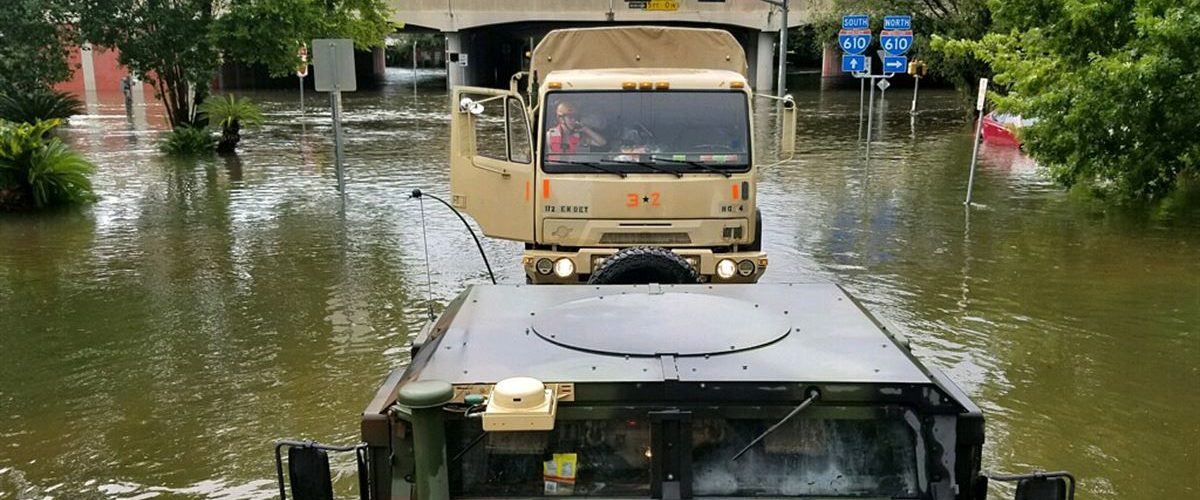Representatives of American Baptist Home Mission Societies Communications recently logged more than 6,100 miles of travel in seven days to assess damage and organize responses to three major Atlantic hurricanes that made landfall in the United States over a period of a month.
“Although we have traveled thousands of miles in this last week, we only saw a sampling of the areas that were impacted by the hurricanes Harvey, Irma and Maria,” Victoria Goff, associate director of the national ministries arm of American Baptist Churches, said in an audio travelogue posted on the agency website. “We saw lots and lots of damage, great need everywhere.”
Goff traveled alongside American Baptist Home Mission Societies Communications Director Susan Gottshall in a journey that began Sept. 26 from the agency’s headquarters in Valley Forge, Pa., to Lake Charles, La., where the first response team of American Baptist Men USA had already been dispatched after a weakened Tropical Storm Harvey caused extensive flooding in southwest Louisiana in the early morning hours of Aug. 30.
“We come with shovels, wheelbarrows, hammers and pry bars and all those things, but that isn’t the ministry,” Jack Cobb, national disaster relief coordinator for American Baptist Men USA, said in the first of a series of interviews recorded along the way. “The ministry is hope. It’s coming along beside people when they’re at their low moment and saying: ‘God loves you, and we want to stand beside you. We want to help you get through this.’”
From there the team traveled to Texas, where Hurricane Harvey made landfall as a Category 4 hurricane with winds of 130 miles per hour and stalled, dropping as much as 60 inches of rain in some areas over the course of several days.
Lois Beverly, a volunteer at Wheeler Avenue Baptist Church in Houston, lost everything in the flood but counted her blessings because she was able to find shelter in a hotel rather than on a cot somewhere.
“In a flood, if it stands in water for certain length of time, the inspectors throw it out, because it has absorbed water,” said Beverly, who went through a similar experience before when she was forced out of her home for four months by flooding in 2015. “It looks good, but he puts this moisture meter on it and it gets going crazy: ‘There’s water in here!’”
The longest interview, spanning 28 minutes, is with Laura Ayala, pastor of First Baptist Church in Rio Pedres, Puerto Rico, describing her attempts to minister post-Hurricane Maria without electricity, radio or television, spotty cell-phone service and no gasoline available for residents of the already poverty-stricken commonwealth who actually have enough money to own a car.
“We’re taking it day by day,” she said Sept. 29. “We hope for the best, but we’re ready for it to be like this for six months or more.”
After stops in south Florida, where Hurricane Irma, one of the strongest storms ever recorded in the Atlantic Ocean, made landfall in the U.S. mainland after sweeping through the Caribbean on Sept. 10, the duo returned home Oct. 7.
“It was a week of working late into the night, missing breakfast, waiting in airport lines, listening to conference calls through Bluetooth while driving to the airport and eating more fast food than I care to remember,” Gottschall said in the series’ final installment. “All of these inconveniences, however, pale in comparison to the challenges faced by those who live in the paths of hurricanes Harvey, Irma and Maria that cut through the southern United States and Puerto Rico, so I’m not complaining.”


